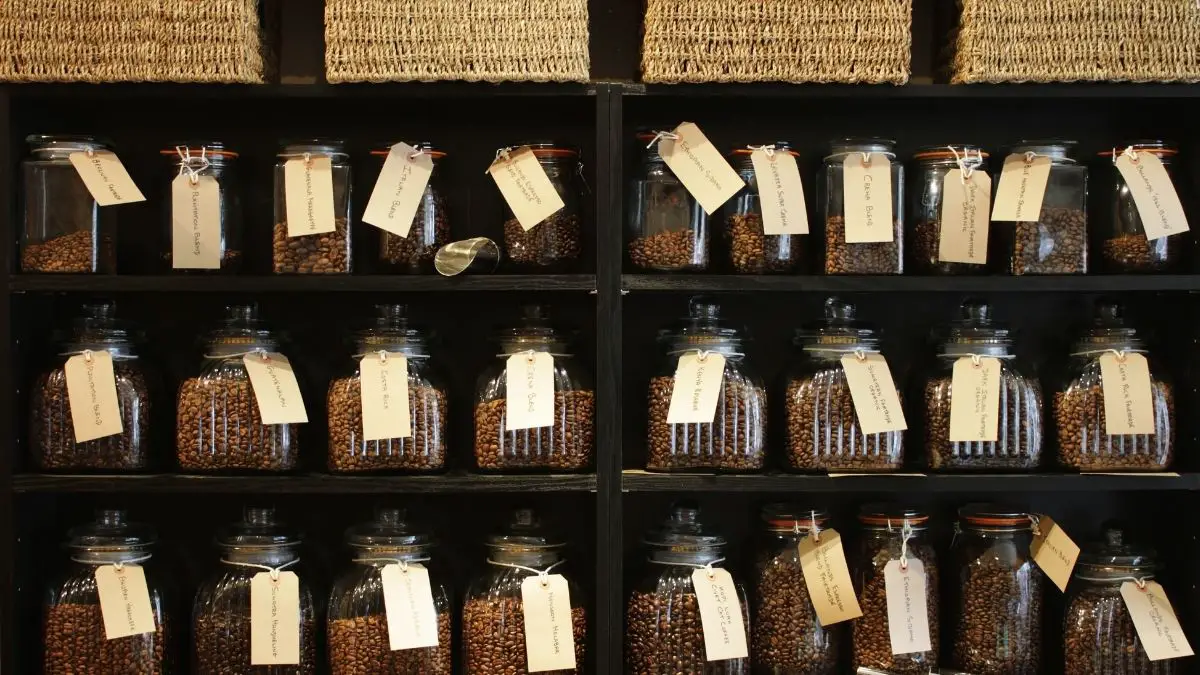Coffee grows naturally around the equator all over the world, but perhaps the most famous coffee beans come from Africa and South America. Generally, most coffee aficionados want to know what distinguishes those cultivated in South America from the African coffee beans.
The primary distinction between South American and African coffee beans is their taste characteristic. South American coffee beans have chocolaty, nutty, and caramel flavors whereas African coffee beans offer flowery, citrusy, and fruity flavors.
Although the variation in flavor is obvious, there are many more factors that distinguish each region’s coffee bean. Natural factors including the environment in which the coffee is grown will influence its quality, and so will the process used to make the final roast.
It’s fascinating to see how different temperatures and areas can affect how it tastes, particularly when the difference is just as noticeable as coffee beans. And in this article, we will explore more about those concerns.
Without further ado, let’s get started.
The Origin – South America Vs Africa
Coffee now is extremely different from what it used to be, and along with that, comes a difference in flavor. If you’re living in the Western Hemisphere, particularly in Canada and the United States, the majority of the coffee you’ve consumed has most likely come from South America. This is due to the fact that most people love the chocolaty, nutty flavor.
Its flavor is influenced by its geographical location. South America is endowed with mountain ranges and a lush tropical environment. As a result of its temperature and soil being extremely beneficial to the coffee plant, South America is commonly called to be “coffee heaven.”
Coffee blooms finest in humid, tropical regions, in case you didn’t know. Mostly all coffee plants, particularly Arabica, flourish at greater elevations, such as those found in South America’s mountain ranges.
As you can see, location plays an important part in shaping the flavors of each coffee bean. As a result, we shall now attempt to compare the flavor of African coffee to that of South American coffee.
What Do They Taste Like? South America Vs Africa
South America
People frequently associate South American coffee with the following tastes: classic, consistent, caramel-like, nutty, and chocolatey. Let’s go over each of these taste characteristics one by one.
South American tastes are more consistent due to their better control over the processing procedure, as South American coffee bean growers have more power over their goods than other farmers. As a result, they’ve begun creating a “washed coffee” kind, which is a more consistent, tasty variety of coffee.
South American coffee, particularly Colombian coffee, is noted for its chocolaty flavor profile, which is evocative of cacao, a plant from which chocolate is derived. Furthermore, South American coffee beans have the scent and taste of almonds and hazelnuts, earning them the moniker “nutty,” and their sweet taste and aroma make them more comparable to caramel.
Most Common Flavors Of South American Coffee Beans
- Nutty Flavor
The processing and roasting techniques broadly performed in Central and South America bring out the flavor and aroma characteristic of fresh nuts found in the continent’s coffee beans. These coffee beans are typically flavored with almonds, hazelnut, and other nuts.
- Chocolatey Flavor
Many South American coffee beans have richer chocolate tastes compared to Central American coffee beans. South American coffee beans often have a mild sweetness that tastes similar to a milk chocolate bar, but Central American coffee is very much like dark chocolate pieces. Colombian coffee beans frequently feature traces of cocoa.
Africa
African coffee is generally described as floral, with overtones of cherries, citrus, and fruits. Furthermore, because they are not commonly seen in North America, they have a rather unusual flavor.
African coffee is all about power: it has a fruity and citrus-like flavor with a forceful punch. Some consider them an acidic variation, particularly when contrasted to the creamy coffee from South America. However, since they are produced at such high elevations, one cannot help but appreciate their texture, taste, and flavor.
African coffee, compared to South American coffee, is not as burnt, so you might be surprised by the range of tastes packed into a single cup of joe. While South American coffee is traditional, like a steak, African coffee is vibrant and diversified, like Thai cuisine.
Most Common Flavors Of African Coffee Beans
- Citrus Flavors
Many African coffee beans have a citrus flavor, such as grapefruit, lime, orange, or lemon. They are distinguished by a mild sourness. Many factors can impact the quantity of citrus flavor that comes out once the coffee beans are brewed when it has the possibility to have a citrus taste. These elements include the pH of the soil in which it is cultivated, the natural minerals, the period the coffee bean was picked, the processing technique used, and how it will be roasted.
- Berry Notes
Berry overtones can be mild, with a gentle sweetness that adds a dimension to lightweight coffee beans, or they might be acidic. Tangier notes like cherry and boysenberry can be present for many African coffee beans.
- Floral Notes
Many African coffee beans have mild floral overtones. Jasmine, lavender, elderflower, dandelion, honeysuckle, and rose are common floral aromatics in these coffee beans.
- Fruit Flavors
Most African coffee beans are roasted to keep their fruity flavor, whereas most Central and South American coffee beans were charred, removing the fruity flavor. Furthermore, coffee beans cultivated at high elevations appear to have more acids, which the brain perceives as fruity sharpness. Since most African coffee beans were cultivated at high elevations, their fruit tastes are more intense. The composition of the soil, the technique of roasting, processing, and harvesting, climate, and altitude, all have a significant impact on the delicious tastes of coffee.
Which Is More Acidic? South America Vs Africa
Because it is roasted for such a shorter amount of time, African coffee is generally more acidic than South American coffee. The roasting procedure heats the coffee beans that reduces some of the acidic components in the bean.
Because African coffee has a larger body, it does not need to be roasted for as long, but South American coffee roasters prefer to pull out the stronger flavors of their beans by roasting them for longer lengths of time. Roasting destroys organic molecules, leading the sweetness of sugar caramelizes sweetness to mask the acidity.
The acidity of coffee beans may be affected by a variety of factors including climate, origin, and processing processes. Organic chemicals contained in coffee beans, such as chlorogenic acid, confer acidic properties, which means simply that the finer a roast is, the more acidic a coffee bean will be, as well as the deeper the roast is, the more bitter this will taste.
Texture Comparison – South America Vs Africa
Have you ever heard the expression “A clean cup is the beginning point of coffee quality”? Simply said, the cleanliness of the coffee beans determines the quality of the coffee. The phrase ‘clean’ refers to the coffee that has almost no caffeine taste residue in your tongue.
Because of the manner in which Central and South American coffee beans are grown, cleaned, and roasted, it is sometimes labeled as clean.
The judgment is still undecided as to whether body or mouthfeel are synonymous. To be honest, it’s difficult to get most individuals in the coffee society to agree on anything.
Which Is Better? South America Vs Africa
They have distinct flavors. Greater emphasis on the adjective “distinct.” South American coffee feels more similar to that of Americans and Canadians, but it is not superior. Consider this, American turkey is a true classic and a must-have, this does not imply that it is the greatest meal available, since oriental delicacies such as Chinese and Japanese food may also delight your taste buds.
Frequently Asked Questions
Where Is Coffee Grown?
Coffee is grown in many different parts of the world. They may, for example, bloom in South America, Africa, Southeast Asia, Central America, and other places. Each has a distinct taste profile that gives them a distinct hue and complementing abilities.
Which Country Makes The Best Coffee Beans?
Colombian coffee is well known across the world because of its rich taste and unrivaled quality. Obviously, everyone’s definition of “best coffee” is different, but it’s difficult to deny that Colombia produces some of the greatest coffee beans.
Which Country Consumes Most Coffee?
Finland drinks the most coffee, with almost 26 pounds consumed per capita.
Summary
I hope you have a good idea of the distinction between South American and African coffees by now.
The taste of coffee varies per continent according to the region and soil in which it was cultivated. By nature, African coffee is more earthy and fruity, with a fuller body but a little more acidity. On the other hand, South American coffee has chocolate undertones, is nutty, has lower acidity, and has a medium body.
If you haven’t had coffee from both regions, you should do so and see what all the fuss is about.

